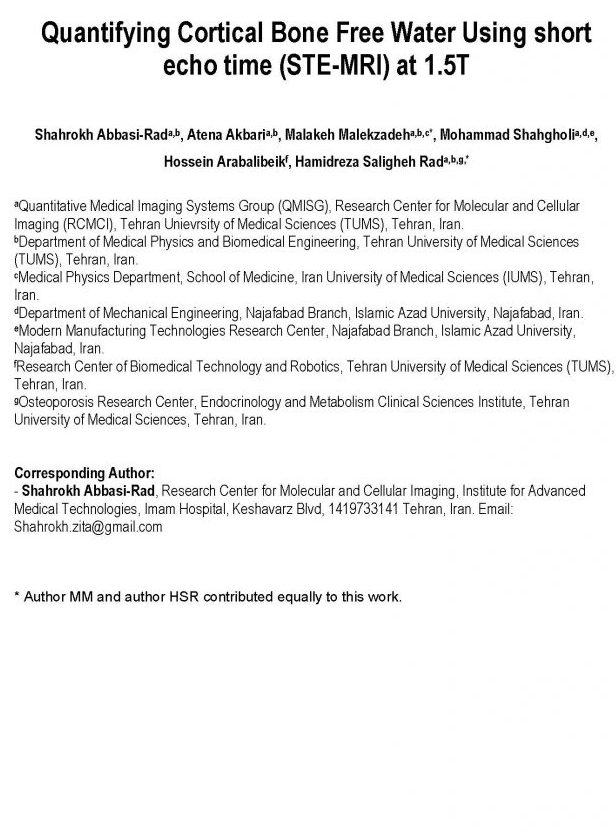Quantifying cortical bone free water using short echo time (STE-MRI) at 1.5 T
Abstract
Purpose:
The purpose of our study was to use Dual-TR STE-MR protocol as a clinical tool for cortical bone free water quantification at 1.5 T and validate it by comparing the obtained results (MR-derived results) with dehydration results.
Methods:
Human studies were compliant with HIPPA and were approved by the institutional review board. Short Echo Time (STE) MR imaging with different Repetition Times (TRs) was used for quantification of cortical bone free water T1 (T1free) and concentration (ρfree). The proposed strategy was compared with the dehydration technique in seven bovine cortical bone samples. The agreement between the two methods was quantified by using Bland and Altman analysis. Then we applied the technique on a cross-sectional population of thirty healthy volunteers (18F/12M) and examined the association of the biomarkers with age.
Results:
The mean values of ρfree for bovine cortical bone specimens were quantified as 4.37% and 5.34% by using STE-MR and dehydration techniques, respectively. The Bland and Altman analysis showed good agreement between the two methods along with the suggestion of 0.99% bias between them. Strong correlations were also reported between ρfree (r2 = 0.62) and T1free and age (r2 = 0.8). The reproducibility of the method, evaluated in eight subjects, yielded an intra-class correlation of 0.95.
Conclusion:
STE-MR imaging with dual-TR strategy is a clinical solution for quantifying cortical bone ρfree and T1free.

